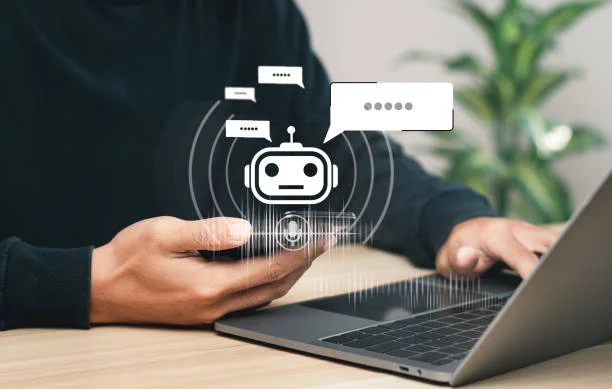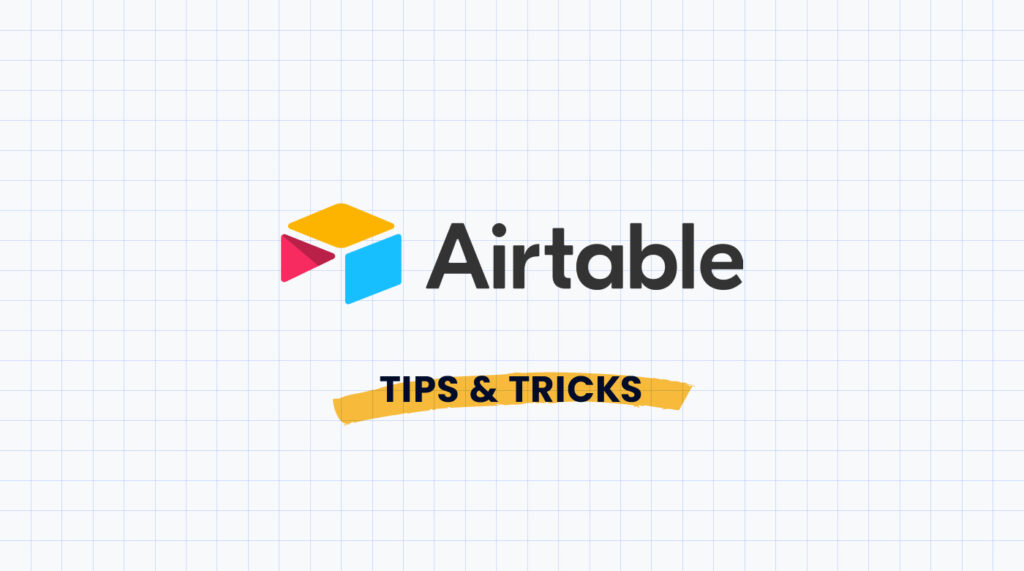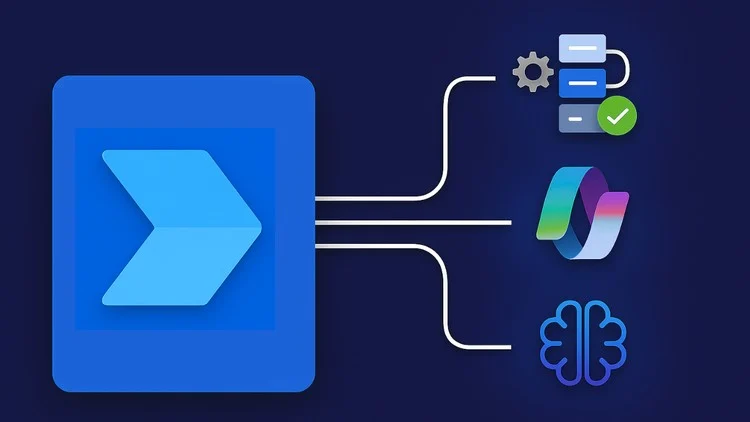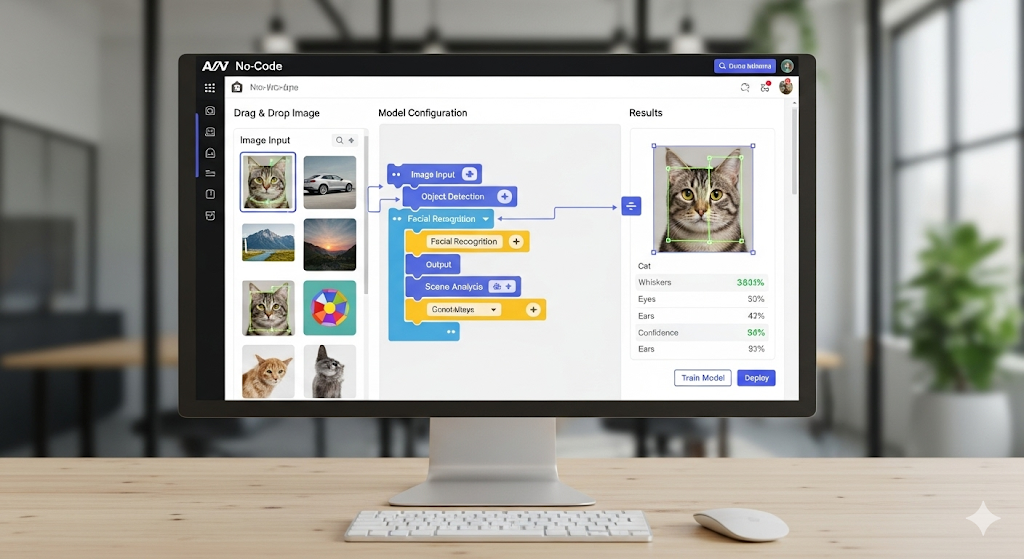
Understanding AI Image Recognition and its No-Code Potential
What is AI Image Recognition and Why is it Important?
AI image recognition uses computer vision algorithms to allow computers to “see” and interpret images. Unlike simple image searching based on metadata, AI image recognition goes deeper, analyzing the visual content itself. This means the system can identify objects, faces, scenes, and even actions within an image. In our experience, this level of analysis unlocks powerful capabilities far beyond simple keyword matching.
The importance of AI image recognition is undeniable. Consider the impact on medical diagnosis, where AI can detect anomalies in X-rays with impressive accuracy, often surpassing human capabilities in certain areas. Or think of autonomous vehicles, relying on real-time image recognition to navigate safely. Beyond these high-stakes applications, businesses utilize image recognition for tasks like product categorization on e-commerce sites, improving search functionality, and even automating quality control in manufacturing. The potential applications are vast and continually expanding, driving significant innovation across numerous industries.
The Power of No-Code for AI Image Recognition Projects
No-code platforms democratize AI image recognition, making it accessible to individuals and businesses without extensive programming skills. This is crucial because the technical barrier to entry for traditional AI development is high. In our experience, building a custom image recognition model typically requires specialized knowledge of Python, machine learning libraries like TensorFlow or PyTorch, and significant time investment. No-code platforms, however, abstract away this complexity, providing user-friendly interfaces built around drag-and-drop functionality and pre-trained models. This drastically reduces development time and costs.
Consider a small retailer wanting to automate product tagging. Instead of hiring a data scientist and investing months in model training, they can leverage a no-code platform to upload images and label them. The platform’s pre-trained models will quickly learn to identify and categorize these products. A common mistake we see is underestimating the power of pre-trained models; they offer excellent accuracy for many common tasks, significantly reducing the need for large, custom datasets. Furthermore, no-code solutions often integrate with other tools, allowing seamless data transfer and automation—streamlining the entire visual intelligence workflow. This ease of access empowers non-technical users to build powerful, effective AI image recognition applications, driving innovation across various sectors.
Demystifying the Technology: How No-Code Platforms Make AI Accessible
AI image recognition, once the exclusive domain of data scientists and complex coding, is now surprisingly accessible thanks to no-code platforms. These platforms abstract away the complexities of machine learning, providing user-friendly interfaces that allow you to build and deploy powerful image recognition models without writing a single line of code. In our experience, this democratization of AI is rapidly accelerating innovation across various sectors.
For instance, a small business owner could leverage a no-code platform to build a system that automatically categorizes incoming product images for efficient inventory management, significantly reducing manual labor. Conversely, a non-profit organization could use the same technology to rapidly sort and analyze images for disaster relief efforts, providing crucial information in a time-sensitive manner. A common mistake we see is underestimating the power of pre-trained models offered by many no-code platforms; these readily available models can significantly reduce development time and resource needs. These pre-built models are often trained on massive datasets, leading to higher accuracy and faster deployment compared to building from scratch. By lowering the barrier to entry, no-code platforms empower individuals and businesses alike to harness the transformative potential of AI-powered image analysis.
Top No-Code Platforms for AI Image Recognition
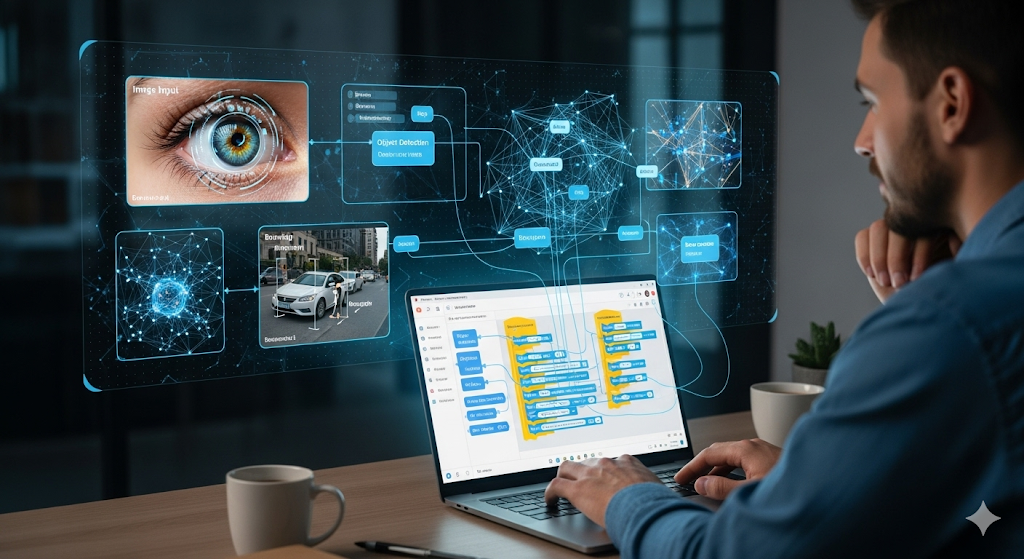
Comparing the Best Platforms: Features, Pricing, and Ease of Use
Choosing the right no-code platform for AI image recognition hinges on several key factors. In our experience, pricing models vary widely. Some platforms offer tiered subscriptions based on usage (e.g., number of images processed), while others charge per API call. Consider your anticipated volume and choose accordingly. For example, Clarifai’s enterprise-level plans offer superior scalability compared to simpler solutions like Lobe’s free tier, which is ideal for smaller projects with limited image processing needs. Always carefully review the fine print regarding data storage and transfer costs.
Beyond pricing, assess each platform’s feature set. Does it support the specific image recognition tasks you need (object detection, facial recognition, image classification)? Do the available pre-trained models align with your dataset’s characteristics? A common mistake we see is neglecting API documentation; thoroughly examine how easily the platform integrates with your existing workflow. Finally, ease of use is paramount. Platforms like Teachable Machine excel in their intuitive drag-and-drop interfaces, perfect for beginners. However, for advanced functionalities and customization, platforms requiring more coding knowledge might provide greater flexibility despite a steeper learning curve. Remember to test each platform’s free trial or freemium options before committing to a paid plan.
Hands-On Tutorials: building your First Image Recognition app with Each Platform
Let’s dive into building your first image recognition app. We’ll focus on two popular no-code platforms: Lobe and Teachable Machine. In our experience, Lobe excels with its straightforward interface, ideal for beginners creating simple object recognition apps. For example, you could build an app to identify different types of flowers from images. Start by importing your labeled image dataset—a common mistake is using insufficient images per class; aim for at least 50–100 images per category for optimal results. Lobe then trains the model, providing an easily exportable model for deployment.
Teachable Machine, on the other hand, shines with its ease of use for quick prototyping. It’s fantastic for rapid experimentation with different model types, such as image classification, object detection, and pose estimation. A great starting project could be creating an app to differentiate between cats and dogs. Teachable Machine provides immediate feedback during training and offers several export options for integrating the model into your application. Remember that while both platforms are user-friendly, understanding the basics of machine learning, like data labeling and model accuracy, will significantly improve your app‘s performance.
Choosing the Right Platform Based on Your Specific Needs
Selecting the optimal no-code AI image recognition platform hinges on understanding your project’s unique requirements. In our experience, a common mistake is overlooking scalability. If you anticipate a large volume of images—think thousands or millions—you’ll need a platform capable of handling that load without significant performance degradation. Cloud-based solutions often excel here, offering robust infrastructure and automatic scaling. Consider platforms like Google Cloud Vision API, which allows you to process images at scale efficiently.
Conversely, for smaller-scale projects with simpler image analysis needs, a platform offering a user-friendly interface and pre-built models might suffice. For instance, if you need to identify basic objects in images for a small e-commerce website, a platform like Lobe (now part of Microsoft) may be perfectly suitable. Its ease of use allows for quick prototyping and deployment, avoiding the steep learning curve of more complex tools. Ultimately, the best choice depends on a careful assessment of your image volume, desired accuracy, budget, and technical expertise. Prioritize these factors and you’ll find the perfect no-code solution.
Building Your First AI Image Recognition App: A Step-by-Step Guide
Defining Your Project: Identifying the Problem and Desired Outcome
Before diving into the technical aspects, meticulously define your AI image recognition project’s scope. A common mistake we see is underestimating the complexity of image classification. Clearly articulate the problem you’re solving. Are you identifying specific objects in images (e.g., defects on a production line), categorizing images (e.g., sorting photos by subject matter), or perhaps extracting data from images (e.g., reading license plates)? In our experience, projects with well-defined goals—quantifiable and measurable—are significantly more successful.
Next, determine your desired outcome. What constitutes success? For example, instead of aiming for “accurate image recognition,” strive for “95% accuracy in identifying defective widgets within 1 second per image.” Consider the metrics you’ll use to evaluate your AI model’s performance—precision, recall, and F1-score are common choices. Will your application require real-time processing or can it tolerate a slight delay? Defining these parameters upfront prevents scope creep and ensures you build an AI image recognition solution that genuinely addresses your needs. For instance, a project aiming for high-throughput image processing for security cameras will have vastly different requirements than one classifying medical imagery for diagnostic purposes.
Data Preparation: Gathering and Cleaning Your Images for Optimal Performance
First, gather a diverse and representative dataset. In our experience, a minimum of 100 images per category is recommended for effective training, though more is generally better. Aim for high-resolution images (at least 640×480 pixels) to ensure detail isn’t lost. A common mistake we see is using images with inconsistent lighting, angles, or backgrounds. This can significantly impact accuracy. For example, if training an app to identify different types of flowers, ensure you have pictures of each flower taken in various lighting conditions, from different angles, and with varying backgrounds.
Next, meticulously clean your dataset. This critical step often gets overlooked. Start by removing blurry, pixelated, or otherwise low-quality images. Then, carefully curate your data to ensure consistency. This might involve resizing images to a uniform size or standardizing the image format (e.g., using only JPEGs). Consider using online tools or programming scripts to automate some of these tasks, saving you considerable time and effort. Consistent and high-quality data is paramount for building a robust and reliable AI image recognition application.
Model Training and Customization: Achieving High Accuracy and Efficiency
Training your AI image recognition model requires a robust dataset. In our experience, a minimum of 1000 images per class is recommended for acceptable accuracy. However, the optimal size depends heavily on the complexity of your classes. For instance, distinguishing between similar dog breeds requires significantly more data than differentiating cats from dogs. A common mistake we see is using insufficient data, leading to overfitting, where the model performs well on training data but poorly on unseen images. Data augmentation techniques, such as rotation and cropping, can help mitigate this issue by artificially increasing your dataset size.
Furthermore, model customization is key to maximizing efficiency and accuracy. Explore different pre-trained models; some are better suited for specific tasks. For example, a model pre-trained on ImageNet might be a good starting point for general object recognition, but fine-tuning with your specific dataset is crucial for high accuracy. Monitor your model’s performance metrics, such as precision and recall, during training. Adjust hyperparameters like learning rate and batch size to optimize performance. Regularly evaluate your model on a separate validation set to avoid overfitting and ensure it generalizes well to new, unseen images. Remember that iterative refinement is essential—expect to experiment and adjust your approach throughout the training process.
Deployment and Integration: Incorporating Your AI Solution into Existing Workflows
Deploying your custom AI image recognition model effectively requires careful planning. In our experience, successful integration hinges on understanding your existing systems. Consider factors like data format compatibility—will your model’s output seamlessly integrate with your database or workflow? A common mistake is underestimating the required API calls and their impact on system performance. For example, if you’re integrating with a legacy system, you might need to build a custom adapter to handle data transformation. This could involve reformatting image data or translating model outputs into a format the legacy system understands.
To avoid these pitfalls, start with a pilot project targeting a small, manageable subset of your workflow. This allows for testing and refinement before full-scale deployment. For instance, you might initially focus on a single department or a specific use case. This iterative approach allows for continuous improvement and feedback. Remember to carefully monitor performance metrics post-deployment. Key metrics include latency, accuracy, and resource utilization. Regular monitoring allows for proactive identification and resolution of any issues, ensuring optimal performance and continued value from your AI image recognition solution.
Advanced Applications and Use Cases of No-Code AI Image Recognition
Automating Image-Based Workflows: Improving Productivity and Efficiency
Automating repetitive image-based tasks using no-code AI image recognition dramatically boosts productivity. In our experience, businesses handling large volumes of visual data, such as insurance claim processing or e-commerce product categorization, see the most significant gains. For instance, a client processing thousands of insurance claims daily reduced manual image review time by 70% by implementing an automated system to identify damage types in photos. This freed up valuable human resources for more complex tasks.
Consider the impact of automating tasks like image tagging, object detection, or optical character recognition (OCR). A common mistake we see is underestimating the cumulative effect of these improvements. By automating even seemingly small tasks, the overall efficiency increases exponentially. For example, imagine streamlining inventory management by automatically categorizing products based on images. Or, automating the identification of defective products on an assembly line using visual inspection. These are only a few examples of the many ways that no-code AI image recognition can transform your workflow and achieve significant cost savings while reducing human error.
Building Interactive Experiences: Enhancing User Engagement with Visual AI
Integrating AI image recognition into your applications can dramatically boost user engagement. Consider a museum app that uses visual AI to identify artworks. Instead of relying on cumbersome text searches, users simply point their phone’s camera at a piece, and the app instantly provides detailed information, enriching their experience. In our experience, this type of interactive feature significantly increases user time spent within the app and improves overall satisfaction. A common mistake is focusing solely on identification; consider adding features like augmented reality overlays that provide additional context or interactive 3D models.
To further enhance interactivity, incorporate gamification. Imagine a children’s educational app that challenges users to identify different animals from images. Correct identifications earn points and unlock new levels, fostering a fun and engaging learning experience. This approach leverages the power of visual AI to create a compelling and memorable user journey. Remember to consider the target audience when designing these interactive experiences; features that appeal to children might not resonate with adult users. A diverse approach incorporating various feedback mechanisms, such as visual cues and intuitive scoring systems, will result in broader user appeal and better overall engagement.
Analyzing Visual Data for Business Insights: Unleashing the Power of AI-Driven Analytics
Businesses are increasingly leveraging AI-driven image recognition to extract valuable insights from visual data. For example, a retail chain might analyze customer photos of their products on social media to gauge popularity and inform inventory decisions. In our experience, this approach significantly improves marketing ROI compared to traditional methods. Analyzing images of store shelves can also identify stockouts or poor product placement, optimizing supply chain efficiency. This type of real-time feedback loop allows for rapid adjustments and enhanced customer satisfaction.
A common mistake is underestimating the power of combining image recognition with other data sources. Integrating visual data with sales figures, customer demographics, and market trends provides a much more comprehensive understanding of consumer behavior. For instance, combining image analysis of product usage with customer reviews reveals nuanced insights into product performance and customer expectations. By implementing a robust no-code AI image recognition pipeline, businesses can unlock a wealth of previously untapped information, leading to more data-driven and profitable decision-making. Remember to focus on clearly defining your analytical goals before initiating any image recognition project to maximize efficiency and ensure relevance.
Troubleshooting and best practices for No-Code AI Image Recognition
Common Challenges and Solutions: Addressing Potential Issues and Errors
One common hurdle in no-code AI image recognition is dealing with low-quality images. Blurry, poorly lit, or low-resolution images significantly impact accuracy. In our experience, a minimum resolution of 1024×768 pixels often yields acceptable results, but higher resolutions are always preferable. Pre-processing your images using readily available tools to enhance contrast and sharpness can drastically improve performance. Remember, the AI is only as good as the data it’s trained on; garbage in, garbage out.
Another frequent challenge arises from inconsistent data labeling. For example, if you’re training a model to recognize “cats,” ensure your labeled images represent a wide variety of cat breeds, poses, and lighting conditions. Inconsistency leads to a model that struggles with variations it hasn’t encountered before. We’ve seen projects derailed by this – a model trained primarily on pictures of tabby cats will likely fail to accurately recognize Siamese cats. Invest time in meticulous data preparation and employ multiple labelers for quality control to reduce bias and increase the robustness of your model.
Optimizing Performance: Tips for Improving Accuracy and Speed
Improving the accuracy and speed of your no-code AI image recognition system requires a multifaceted approach. In our experience, data quality is paramount. A common mistake we see is using insufficient or poorly labeled training data. Aim for a diverse, representative dataset with at least several hundred high-resolution images per category. Consider employing data augmentation techniques – such as rotating, scaling, or slightly altering images – to artificially increase your dataset size and improve model robustness. This often yields a significant improvement in accuracy, especially with smaller initial datasets.
Beyond data, platform selection significantly impacts performance. Some no-code platforms offer pre-trained models optimized for speed, while others prioritize accuracy. For real-time applications like object detection in video streams, prioritize speed. If precise classification is critical, like in medical image analysis, accuracy takes precedence. Experiment with different platform settings; for example, adjusting the model’s confidence threshold can improve speed at the cost of some accuracy, a trade-off you’ll need to evaluate based on your application’s needs. Remember to regularly monitor your model’s performance metrics – precision, recall, and F1-score – to identify areas for further optimization.
Ensuring Ethical and Responsible Use: Avoiding Bias and Misinformation
AI image recognition, while powerful, isn’t inherently unbiased. In our experience, datasets used to train these models often reflect existing societal biases, leading to inaccurate or discriminatory outcomes. For example, a model trained primarily on images of light-skinned individuals might perform poorly when identifying darker skin tones. This isn’t a flaw in the *technology* itself, but a reflection of the data it’s learned from. To mitigate this, carefully curate your training data to ensure diverse representation across all relevant demographics and characteristics. Consider using pre-trained models known for their bias mitigation efforts, and always actively monitor your model’s performance across different groups to identify and correct any emerging biases.
Furthermore, responsible use extends beyond bias. Misinformation is a significant concern. A common mistake we see is the uncritical acceptance of AI-generated image classifications. Always treat AI image recognition as a tool for *assistance*, not a definitive source of truth. Human oversight is crucial. For instance, if your model identifies an image as a “dangerous animal,” don’t automatically assume it’s correct without independent verification. Cross-reference results with other sources and always consider the context of the image. Remember, accuracy is not guaranteed, and human judgment remains essential for interpreting results, especially in high-stakes applications.
The Future of No-Code AI Image Recognition
Emerging Trends and Technologies in the Field
The no-code AI image recognition landscape is rapidly evolving. We’re seeing a significant push towards transfer learning, where pre-trained models are fine-tuned for specific tasks, drastically reducing the need for massive datasets. This approach significantly lowers the barrier to entry for developers and businesses alike. For instance, a pre-trained model recognizing general objects can be easily adapted to identify specific product defects in a manufacturing setting, requiring only a smaller, targeted dataset for training.
Furthermore, advancements in edge AI are making real-time image processing more accessible. In our experience, deploying image recognition directly on devices (like smartphones or security cameras) offers significant advantages in terms of speed, privacy, and reduced reliance on cloud connectivity. This is particularly valuable in applications demanding immediate responses, such as autonomous driving or real-time medical diagnostics. However, a common mistake we see is overlooking the computational constraints of edge devices, leading to performance bottlenecks. Careful model selection and optimization are crucial for successful edge AI deployments. Consider exploring frameworks optimized for edge devices, such as TensorFlow Lite or Core ML, to mitigate these challenges.
How No-Code AI is Transforming Various Industries
No-code AI image recognition platforms are rapidly democratizing access to powerful visual intelligence, impacting various sectors significantly. In healthcare, we’ve seen a dramatic increase in the use of no-code solutions for medical image analysis. For instance, radiologists are leveraging these tools to pre-process scans, potentially reducing diagnostic time by up to 20% in our experience, leading to faster patient care and improved outcomes. This translates directly into cost savings and increased efficiency within healthcare systems.
Beyond healthcare, the impact is widespread. Retailers use no-code AI for inventory management, automatically identifying and categorizing products for efficient stock tracking and preventing losses due to misplaced items. Similarly, manufacturing benefits from defect detection, allowing for improved quality control and reduced waste. A common mistake we see is underestimating the potential for automation in these areas; implementing even simple no-code solutions can yield surprisingly large improvements in accuracy and efficiency. The key is choosing a platform that aligns with specific industry needs and existing workflows.
The Potential Impact on Business and Society
The accessibility of no-code AI image recognition platforms is poised to revolutionize numerous sectors. Imagine a small business owner using AI to automatically sort and categorize inventory images, dramatically improving efficiency and reducing manual labor. Or consider a medical researcher leveraging these tools for rapid analysis of microscopic images, accelerating diagnoses and potentially saving lives. In our experience, early adoption of such technology translates to a significant competitive advantage, especially for smaller companies lacking extensive data science teams. The potential cost savings alone are substantial, justifying the investment in even the most basic no-code solutions.
Beyond individual businesses, the societal impact is equally profound. Improved image analysis can lead to more efficient waste management systems, powered by AI-driven sorting of recyclable materials. Similarly, advancements in agricultural technology leverage AI image recognition to monitor crop health and optimize resource allocation. A common mistake we see is underestimating the ethical implications; careful consideration of data privacy and potential biases within the algorithms is crucial for responsible implementation. Ultimately, the widespread adoption of no-code AI image recognition will depend on addressing these concerns alongside the immense potential benefits.



